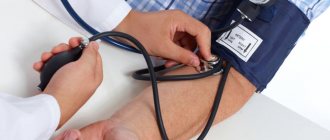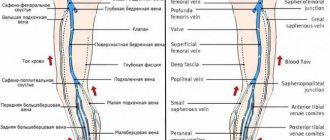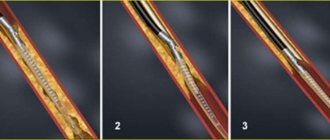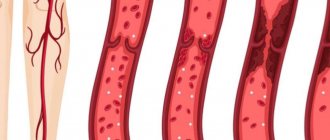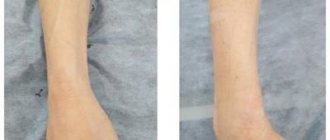- Movement (motor skills): grasping, holding, moving
- Feeling (sensitivity): surface quality (rough, smooth, soft, hard, sharp, dull, cold, warm)
- Gestures: greeting, instructions, defensiveness, emotional expressions
The importance of the human hand is expressed in numerous words and expressions containing the word "Hand" (examples of proverbs and sayings are given in various places on this site).
Types and symptoms
The most common type of arteritis is the so-called temporal or giant cell arteritis , in which the inflammatory process mainly affects the vessels in the eyes, temples and spine. Lack of timely medical care can lead to the development of a chronic form of the disease and complete loss of vision.
The main symptom of temporal arteritis is severe throbbing pain in the right or left temple. Also, the clinical picture may include signs of general malaise, loss of appetite, drooping eyelids on the affected side, increased body temperature, double vision and blurred vision, soreness of individual vessels in the affected area, hyperemia of the skin over them. It is worth noting that the risk group for developing temporal arteritis mainly includes older people.
People who lead a sedentary lifestyle, as well as smokers, often experience arteritis of the lower extremities , manifested mainly by pain in the legs, which intensifies after walking. Due to a local drop in temperature, the patient may constantly feel chilly in the legs, even with warm socks and shoes. In addition, there is slow growth of nails on the affected limb and hair loss.
Takayasu arteritis is a rare form of the disease that mainly affects the branches of the aorta in the arms, as well as the large arteries leading to the brain. Less commonly, the inflammatory process affects the vessels leading to the intestines, heart, and kidneys. The clinical picture of the pathology includes symptoms such as weakness in the arms, lack of pulsation in the affected area, headaches, and dizziness. This form of the disease rarely occurs in older people, but mainly affects people under 30 years of age.
Diagnosis of arteritis
Diagnosis of arteritis in our department of vascular surgery includes a whole range of procedures:
· collection of a detailed medical history and complaints of the patient;
· conducting a general examination, during which the doctor determines the pain of the arteries, measures the pulse, listens to the heart and lungs using a phonendoscope;
· blood pressure measurement;
· carrying out general and biochemical blood tests;
· Ultrasound of blood vessels;
· angiography.
In doubtful situations, when making an accurate diagnosis is difficult, a biopsy of the affected artery may be indicated. If temporal arteritis is suspected, consultation with an ophthalmologist is also necessary.
A case of radial artery thrombosis
The causes of acute arterial thrombosis can be divided into groups.
- The first group is associated with damage to the vascular wall: obliterating atherosclerosis, thromboangiitis, vasculitis, infectious arteritis.
- The second group reflects the reasons associated with changes in the coagulation and fibrinolytic systems of the blood.
- The third group of factors consists of changes in blood flow caused by damage to the vascular wall and, in turn, contributing to the progression of these disorders - stenoses, aneurysmal dilatations, ligation of vessels, arterial bends, compression of vessels from the outside or germination of the vessel wall by a tumor, traumatic injuries.
Among atherothrombosis, thrombosis associated with atherosclerosis and proliferative arterial diseases are in first place in terms of frequency of occurrence.
Traumatic arterial thrombosis is a fairly rare atherothrombosis, especially in the absence of predisposing vascular diseases. Patient K., 42 years old, male, does not have chronic diseases of the cardiovascular system and risk factors (non-smoker, BMI 25, blood pressure 120/80 mmHg, cholesterol level 4.5 mmol/l). The patient participated in a series of amateur volleyball games for two weeks, after which he began to notice pain in the right wrist. He assessed the pain syndrome as a sprain and injury of the musculo-ligamentous apparatus, no treatment was carried out, and he periodically stretched his wrist on his own. The pain persisted for about 2-3 weeks, then one day pain appeared in the right palm and the 1st finger of the right hand, I noticed a coldness of the finger and a bursting pain in it. I sought medical help from a cardiologist I knew. On examination, the 1st finger of the right hand is cold, pale, and slight swelling of the terminal phalanx is noted.
On the day of treatment, thromboembolism of the digital artery was suspected, Aspirin was prescribed at a dose of 100 mg per day and Pentoxifylline at a dose of 400 mg 3 times a day, and an ultrasound scan of the arteries of the upper extremities was recommended to determine the cause and source of digital artery embolism. While taking the medications, the symptoms decreased on the first day. The next day, an ultrasound scan of the arteries of the upper extremities was performed, revealing hemodynamically significant non-occlusive thrombosis of the right radial artery in the distal segment before the division of the radial artery into the deep and superficial palmar branches and signs of hemodynamically significant thrombosis of the lateral digital artery of the 1st finger of the right hand.
Local expansion of the distal segment of the right radial artery in the area of thrombosis, the presence of an echogenic thrombus in the lumen of the artery, local acceleration of the blood flow velocity jet-flow with Vr> 2.0. Disaggregant therapy was carried out for two months. Symptoms of ischemia of 1 finger of the right hand regressed within a week, complete resolution of the thrombus occurred 2 months after diagnosis and initiation of therapy.
During the control ultrasound examination, the diameter of the artery on the right is comparable to the diameter of the left radial artery, the lumen of the artery is free, the flow spectrograms are within normal limits and are symmetrical on the right and left. To assess cardiovascular risk and determine further tactics for patient management, an ultrasound scan of the arteries of the upper and lower extremities, brachiocephalic arteries, and a lipidogram were performed. The indicators were within normal limits, no vascular pathology was detected. Considering the cause of thrombosis in this clinical case, drug secondary prevention of thrombosis is not required; special protective equipment for the wrists when playing volleyball is recommended.
It should be noted the importance of the Doppler ultrasound technique in diagnosing atherothrombosis of peripheral arteries. Ultrasound scanning of arteries allows in some cases to establish a diagnosis and begin treatment without angiographic examination, to find out the cause of thrombosis and embolism, and the technique is also informative for monitoring the effectiveness of therapy.
Causes of the disease
The exact causes of primary arteritis have not yet been identified. Scientists were able to find out that certain groups of bacteria and viruses . a hereditary factor cannot be ruled out , since several cases of morbidity are often detected in one family.
Other causes of inflammation of the arteries include taking certain medications, as well as the immune reactivity of the human body.
The process of disease development begins with immune inflammation of the arterial wall. The inflammatory process occurs due to the formation of autoantibodies and immune complexes in the blood, deposited on the walls of blood vessels. Affected cells release inflammatory mediators, which leads to the formation of inflammatory foci.
Vessels of the lower and upper extremities (arteries, veins)
Ultrasound examination (ultrasound) of the vessels of the lower extremities and veins
Recently, vascular diseases have begun to occupy one of the first positions among all diseases of middle-aged and older people. At the same time, we note that the age limit of middle age has begun to steadily shift from the 40-year mark to the 30-year mark. What contributes to this?
This is facilitated by factors such as:
- negative impact of the environment;
- smoking, especially if it started in adolescence;
- unhealthy diet with increased consumption of carbohydrates and fats;
- sedentary lifestyle.
Each of the above conditions provokes the development of hypertension, obesity, atherosclerosis, and diabetes.
In the case of all these diseases, the vessels are primarily affected. They gradually begin to lose their elasticity and patency due to excessive load, as well as the deposition of atherosclerotic plaques in their walls. Changes can occur not only in arteries, but also in veins. Note that in practice, venous insufficiency of the lower extremities – varicose veins – is quite common. According to statistics, every 5 women and every 15 men suffer from varicose veins of the lower extremities.
It is important to say that the risk group for this disease includes those people whose profession involves being on their feet for a long time (for example, hairdressers). In addition, pregnancy can also provoke varicose veins.
Signs of vascular pathology may include heaviness in the legs and arms, numbness, cramps, pain in the limbs, the appearance of dilated saphenous veins and spider veins.
Currently in medicine there are various methods for treating vascular pathology. But, before starting treatment, even a conservative one, it is worth undergoing a high-quality and detailed diagnosis.
One of the safest and most effective methods for studying blood vessels is ultrasound scanning (ultrasound). Vascular ultrasound techniques are the result of the development of modern equipment that allows, under the control of a monitor, to examine a vessel in real time, see its lumen, determine valvular insufficiency of the veins, evaluate and measure blood flow parameters. It should be noted that it is already becoming possible to diagnose vasoconstrictions, assess valvular insufficiency of the veins, in the case of a blood clot, it is possible to accurately determine the size of the blood clot and monitor its changes during the prescribed treatment.
Ultrasound of vessels (veins and arteries) of the upper and lower extremities, as well as vessels of the neck and head, is carried out in triplex Doppler scanning mode (under visual control of the monitor, with the determination of any blood flow parameters).
So, if at your job you are forced to stand on your feet for a long time, which is why you feel discomfort, leg cramps, swelling, and notice the appearance of spider veins on the skin, then in this case, be sure to check the condition of your blood vessels with an ultrasound.
Treatment methods
Treatment of arteritis in our department is carried out by experienced, highly qualified specialists in the field of phlebology, who use various therapeutic and surgical methods in their practice.
Drug treatment of arterial inflammation involves hormonal therapy using high doses of glucocorticosteroids. As a rule, such treatment continues for a long time, up to one year. If a patient is intolerant to glucocorticosteroids, he is given other drugs that are less effective.
Patients with temporal arteritis with the threat of vision loss are prescribed special treatment, including pulse therapy with prednisone, as well as the use of vasodilators and vasodilators.
Surgical treatment of arteritis is indicated for complicated development of the disease. An operation may be prescribed if the patient has blood clots or vascular aneurysms. Surgical intervention is also required for cancer that causes the development of arteritis.
Timely diagnosed arteritis allows doctors to carry out effective therapy and completely rid the patient of the disease. If the diagnosis was made at an advanced stage with complications, the prognosis may be less favorable.
